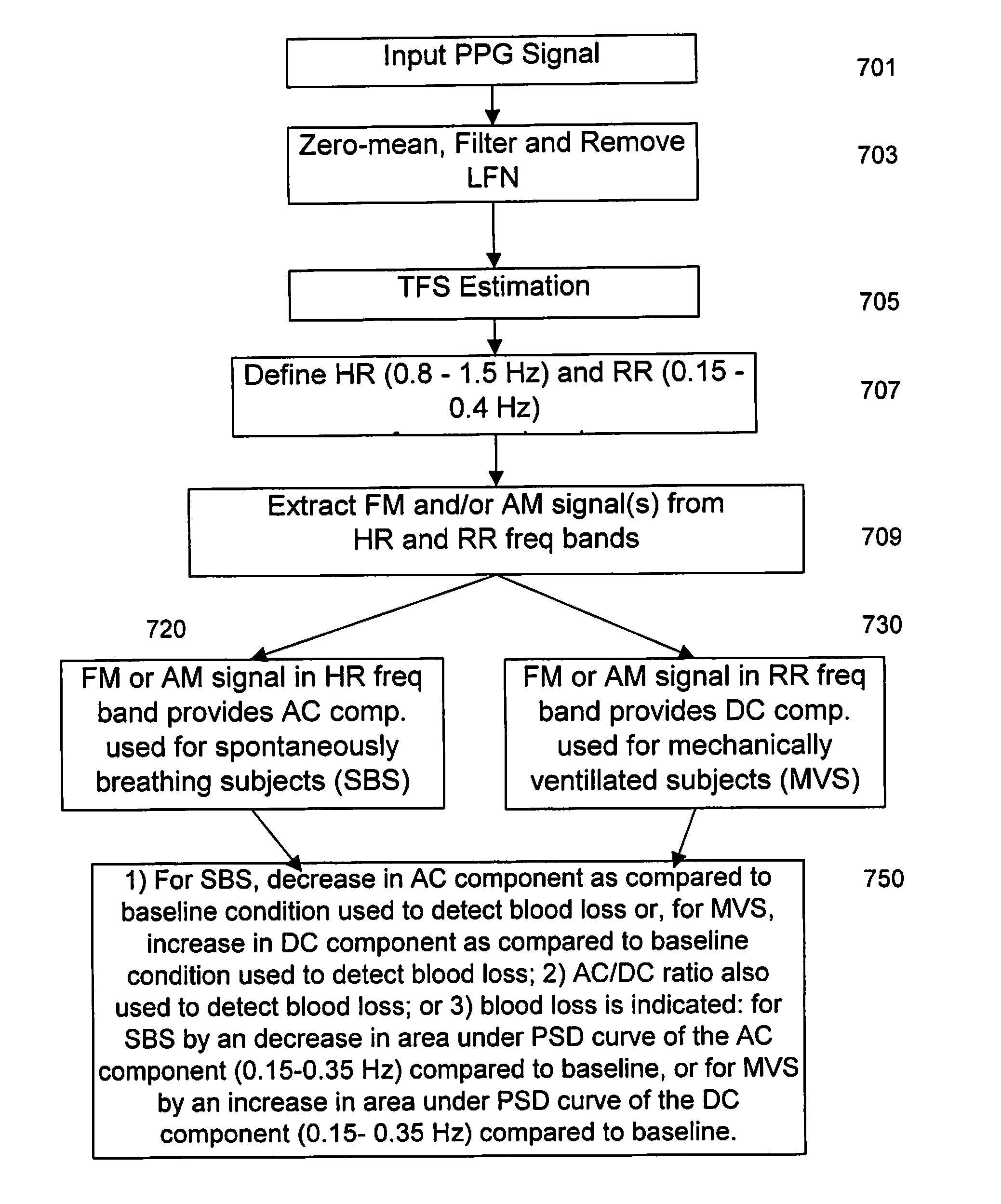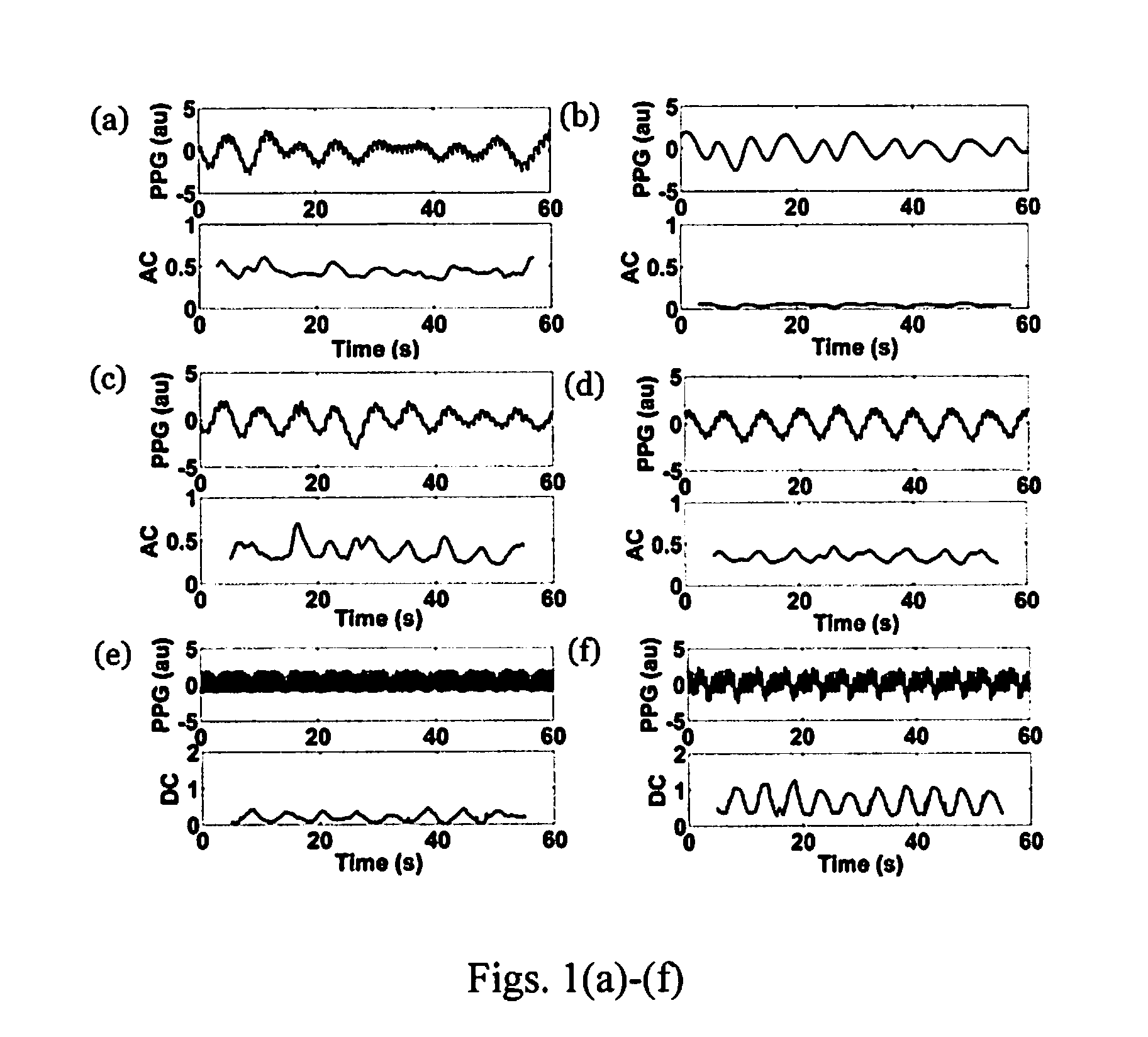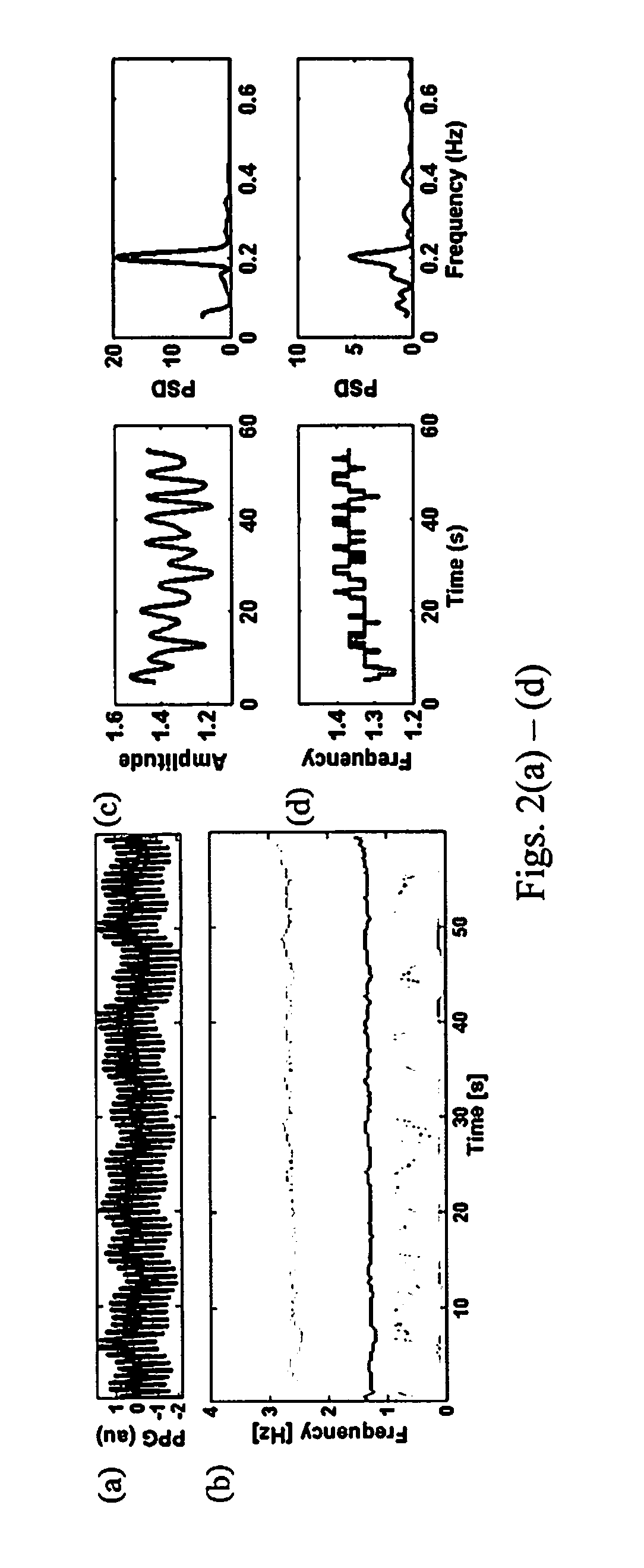Apparatus and method for respiratory rate detection and early detection of blood loss volume
a technology of respiratory rate and blood loss, applied in the field of non-invasive hemodynamic monitoring, can solve the problems of serious life threat, sensitivity and specificity of respiratory variation in ppg amplitude in awake, spontaneously breathing patients and healthy subjects, and the difficulty of early detection of blood loss, such as hemorrhage, to achieve the effect of improving diagnosis and treatment, and increasing the modulation of venous components
- Summary
- Abstract
- Description
- Claims
- Application Information
AI Technical Summary
Benefits of technology
Problems solved by technology
Method used
Image
Examples
Embodiment Construction
[0021]A description of detailed construction of preferred embodiments is provided to assist in a comprehensive understanding of exemplary embodiments of the invention. Accordingly, those of ordinary skill in the art will recognize that various changes and modifications of the embodiments described herein can be made without departing from the scope and spirit of the invention. Descriptions of well-known functions and constructions are omitted for clarity and conciseness.
[0022]The present invention utilizes a non-stationary spectral technique, Variable Frequency Complex Demodulation (VFCDM), which is time-varying and nonlinear, to detect consistent and statistically significant spectral amplitude or frequency changes during hypovolemia preferably by focused analysis of slowly varying venous components (DC) of a PPG signal in anesthetized, mechanically ventilated patients, see FIG. 4, and by focused analysis of Arterial Components (AC) of the PPG signal in spontaneously breathing pati...
PUM
 Login to View More
Login to View More Abstract
Description
Claims
Application Information
 Login to View More
Login to View More - R&D
- Intellectual Property
- Life Sciences
- Materials
- Tech Scout
- Unparalleled Data Quality
- Higher Quality Content
- 60% Fewer Hallucinations
Browse by: Latest US Patents, China's latest patents, Technical Efficacy Thesaurus, Application Domain, Technology Topic, Popular Technical Reports.
© 2025 PatSnap. All rights reserved.Legal|Privacy policy|Modern Slavery Act Transparency Statement|Sitemap|About US| Contact US: help@patsnap.com



